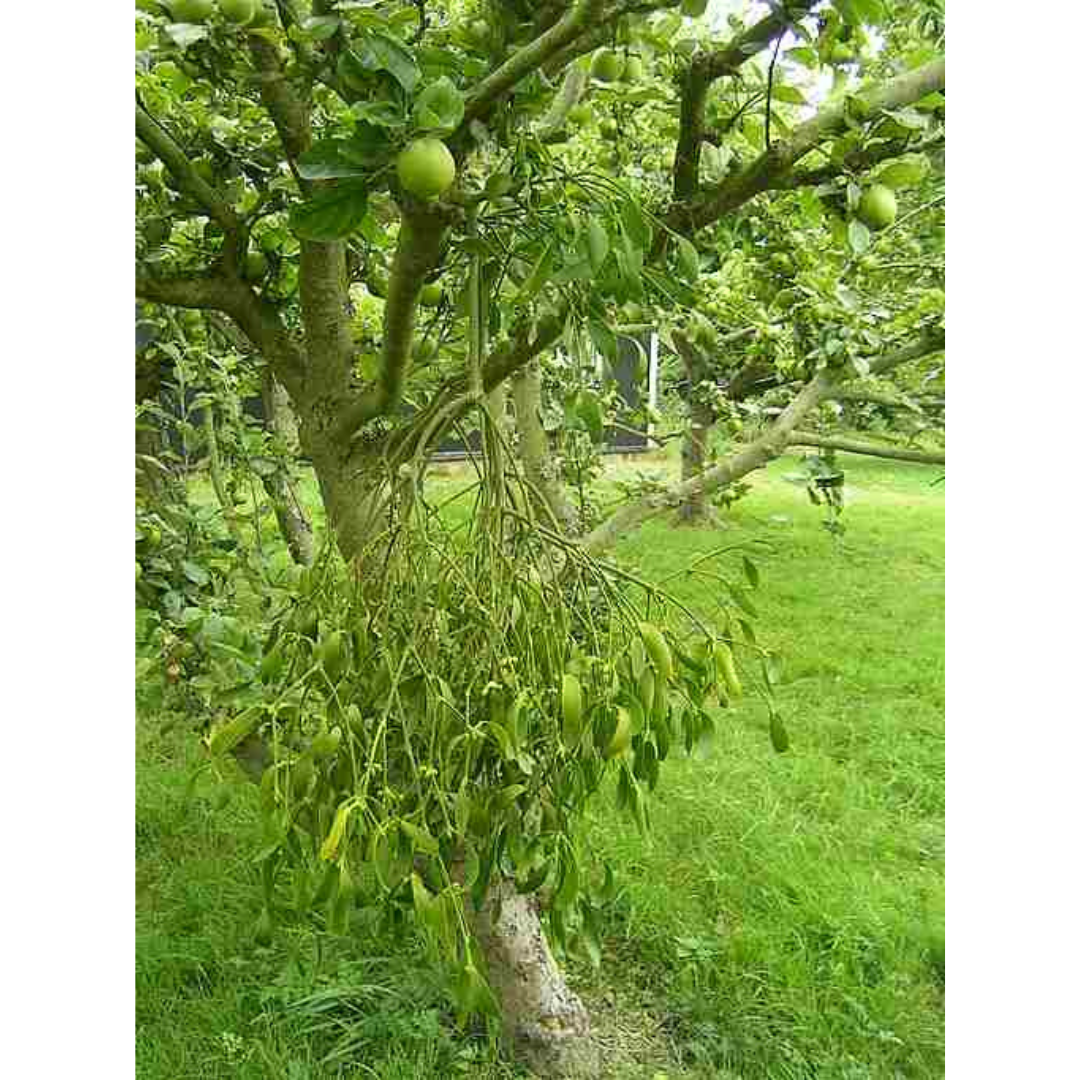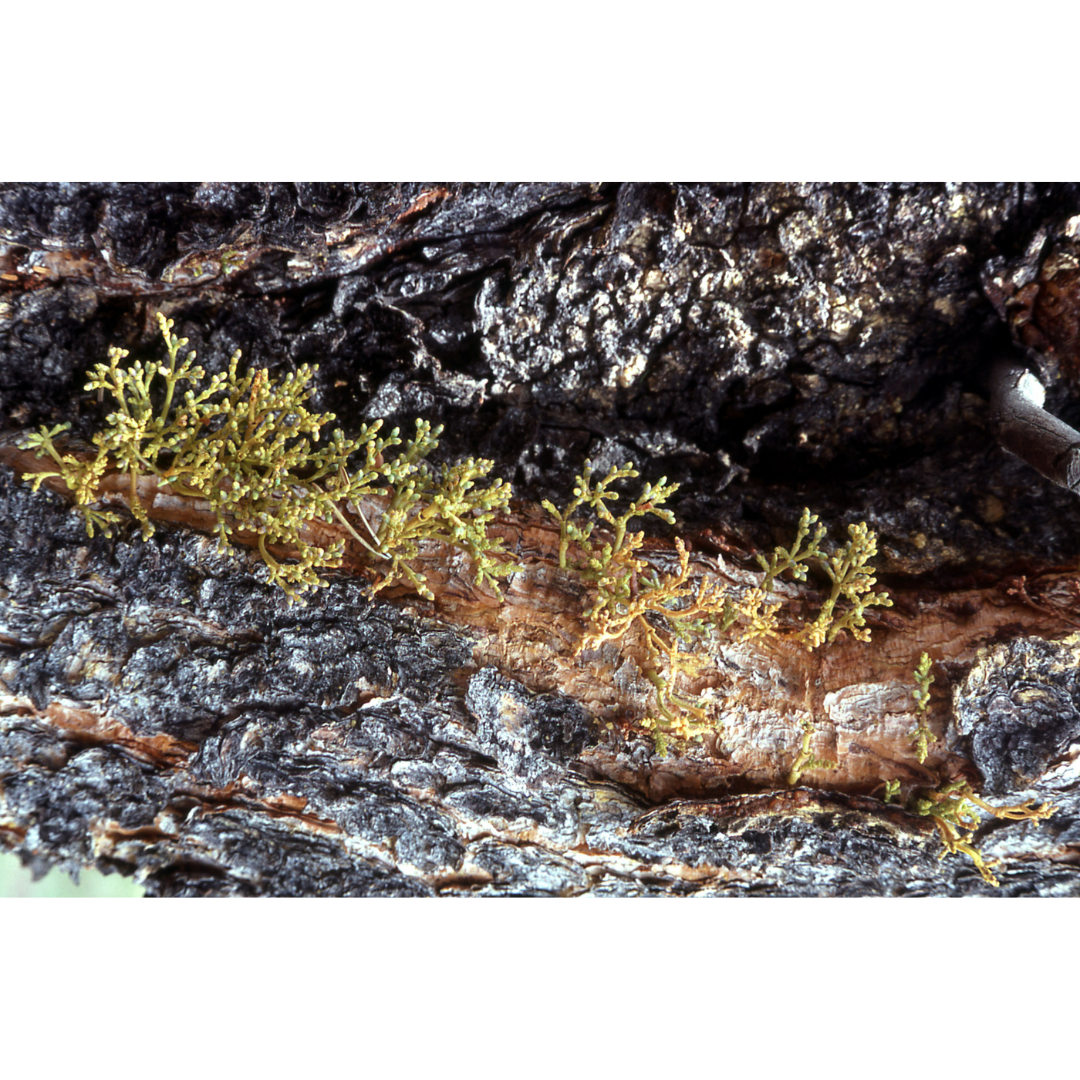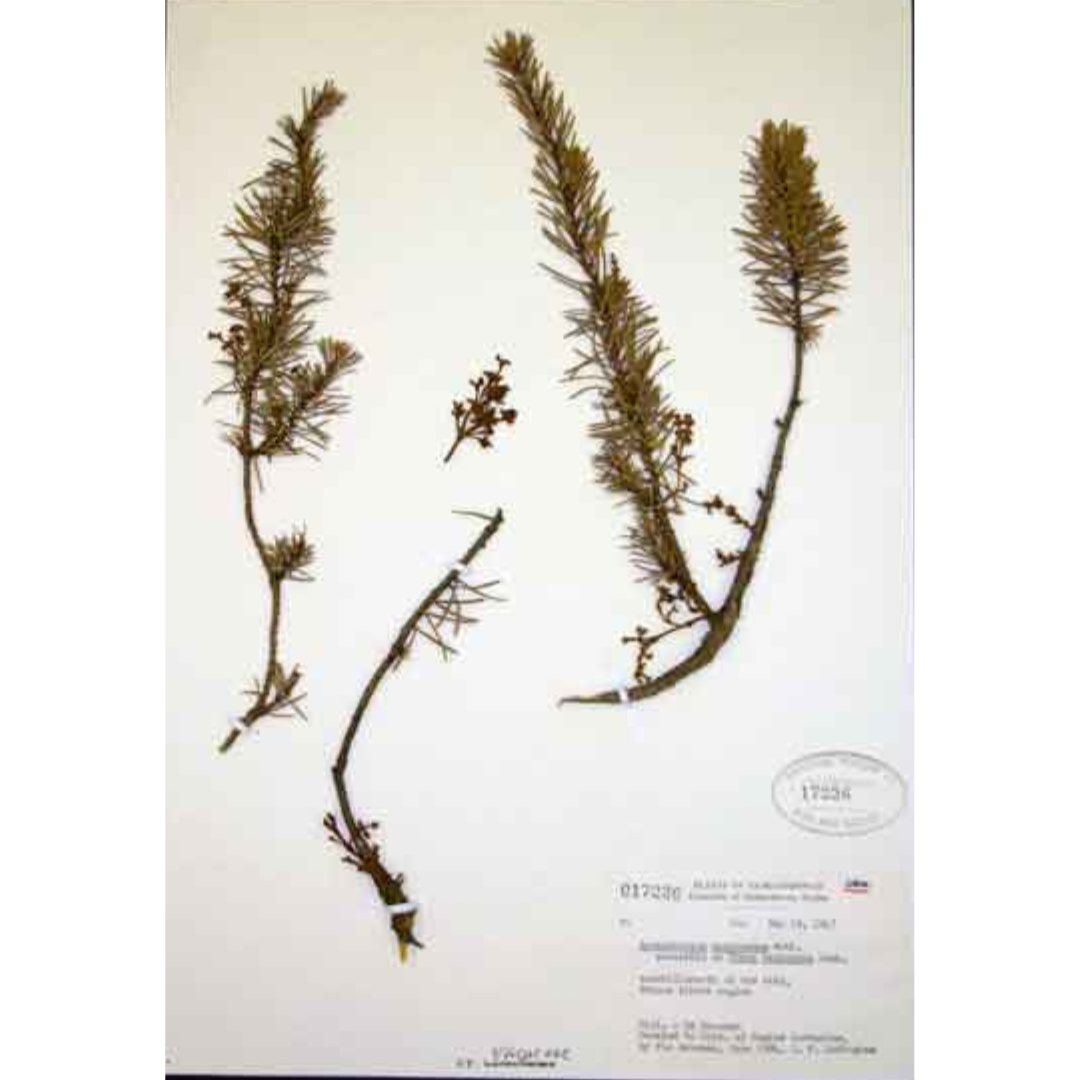Posted on: Wednesday December 6, 2017
Although Christmas is considered to be a “Christian” holiday, many of the rituals we associate with it, such as kissing under mistletoe, are actually pagan in origin. European mistletoe (Viscum album) was considered to be a magical plant by Druidic priests because it mysteriously grew on the branches of trees without its roots reaching the soil. Further, it stayed green in winter, and produced its berries in November and December when other plants were going dormant. Druidic priests collected mistletoe from oak trees to hang in homes in the hopes that it would ward off evil. The custom of kissing under it might have grown from a Scandinavian myth regard Baldur, the god of peace (Foster and Johnson, 2006). The myth states that Baldur was slain by an arrow made of mistletoe but then brought back to life. To commemorate this resurrection, mistletoe was given to the goddess of love, who declared that anyone passing under it should receive a kiss so that the plant would be associated with love not death.

In reality European mistletoes’ seemingly magical appearance is actually due to the fact that it is a semi-parasitic plant on coniferous and deciduous trees. This means that while it has leaves that can photosynthesize its own sugars, it steals water and minerals from a host plant. It is known to infect about 200 different tree species! European mistletoe berries are an important source of food for birds (they are poisonous to people though), which disperse the seeds throughout the forest in their feces and by rubbing the sticky seeds off their beaks. Seeds that land on the branches of trees will germinate there, producing a special root that penetrates through the bark so it can tap into the trees’ sap. Trees infected with European mistletoe are weakened but not usually killed by it. Oak mistletoe (Phoradendron leucarpum), grows in the eastern parts of the United States and Mexico. It is very similar in appearance to European mistletoe but only infects deciduous trees. Oak mistletoe is the species that you can buy fresh in some parts of Canada at Christmas time, although it is not native here.
Image: European mistletoe (Viscum album) growing on its host tree, an apple (Pyrus sp.). From Wikimedia Commons
Manitoba has two species of mistletoe: American dwarf (Arceuthobium americanum) and dwarf mistletoe (A. pusillum). Unlike European and oak mistletoe, these species are complete parasites so they do not produce any green leaves. For this reason they are not particularly attractive, consisting mainly of yellowish-green stems with tiny flowers that mature into bluish berries. The fruits of Manitoba’s mistletoes explosively eject their seeds at speeds up to 80 km/hour, travelling up to 18 metres away from the parent plant. Since the seeds are coated in sticky mucilage, they will adhere to whatever surface they hit, potentially infecting another tree. As these species cause “witches’ brooms” on the conifer trees that they parasitize (usually spruce or pine), and eventually cause tree death, they are not looked upon fondly by foresters. Trees infected with mistletoe become deformed, and are less useful for commercial timber.

American dwarf mistletoe (Arceuthobium americanum) growing on a pine tree. From Wikimedia Commons.

Herbarium specimen of a Jack pine (Pinus banksiana) tree infected with dwarf mistletoe (Arceuthobium americanum). TMM
Regardless of whether you love or hate mistletoe, you have to admit that they are among the world’s most interesting and unusual plants.
Reference
Foster, S. and R.L. Johnson. 2006. Desk reference to nature’s medicine. National Geographic, Washington, D.C.






